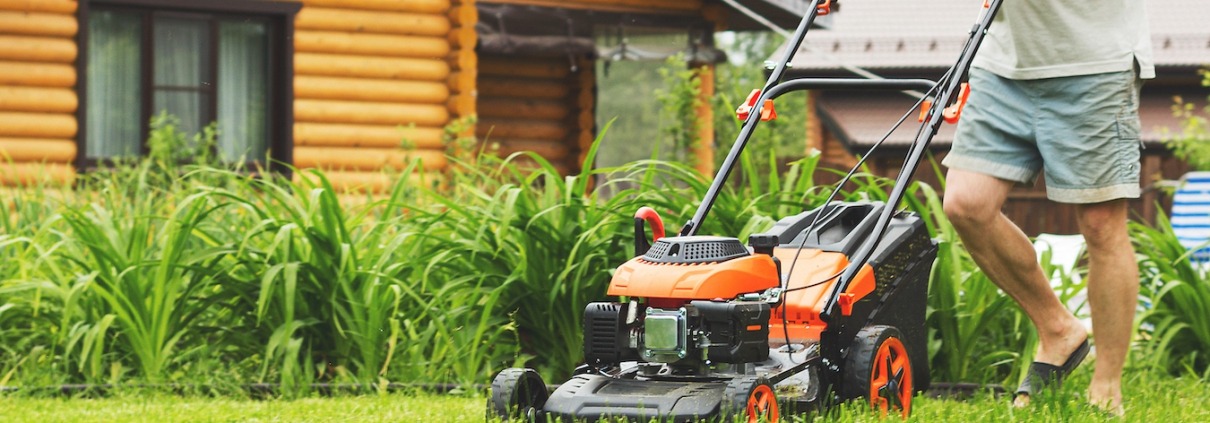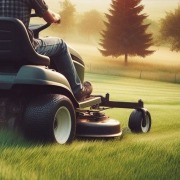Uses for Grass Cuttings: Ways to Repurpose Lawn Trimmings
Steven E / Friday June 30, 2023
Grass clippings from lawns are an overlooked and underutilized natural resource. This article will explore the ways in which these cuttings can be put to good use in the home and garden. From soil improvement to composting, this article will discuss the many benefits of repurposing lawn clippings.
Composting With Clippings
Composting grass clippings is a great way to transform your garden. It is a simple, natural process that can turn everyday yard waste into a goldmine of nutrients and soil conditioner. Composting provides many benefits. As clippings, leaves, and other organic matter break down, they create rich fertilizer for your plants. The compost pile also helps reduce waste from going into landfills which are already overloaded with garbage. By diverting yard waste away from the landfill, you can help make a positive impact on the environment. Furthermore, composted clippings provide essential nutrients such as nitrogen and phosphorus to the soil. These promote healthy plant growth.
Natural Weed Control
Using clippings is an effective way to control weeds in your lawn and garden. To prevent broadleaf weeds, use cut grass as a mulch substitute between plants to limit weed growth. Furthermore, a bagging attachment on the mower can be used to collect and remove grass clippings. Then spread them over other areas of the garden. This will help reduce the presence of weeds while adding essential nutrients to the soil. Additionally, mulching with clippings is an excellent way to suppress weeds and keep moisture in the soil.
With this natural approach, chemical-free weed control can be achieved by utilizing cut grass from your own lawn. A layer of organic material like grass clippings will block sunlight from reaching weed seeds and inhibit their germination. It makes it a valuable tool for any gardener looking for an eco-friendly solution.
Fertilizing Your Lawn And Garden
Grass clippings are an excellent and inexpensive fertilizer for your lawn and garden. While some people may think of it as a hassle, using grass clippings can reduce the expenditure on fertilizers. They also help the environment by reducing fertilizer consumption.
Grass clipping tea is a great way to create a natural fertilizer from grass clippings. Gather your grass clippings and immerse them in water for roughly three days. Be sure to cover the container to prevent mosquitos. Throughout this period, vital minerals and nutrients like potassium, nitrogen, and phosphorus will be released into the water. Following the three-day period, remove the clippings and utilize the leftover liquid as a natural fertilizer for your plants.
Bagged grass clippings can also be used in the garden. They provide nitrogen-rich organic matter that helps to improve soil structure. It helps soil structure by increasing porosity and improving water retention.
Feeding Livestock
It is also worth considering the use of clippings as a form of livestock feed. Grass clippings are an excellent source of valuable nutrients and minerals. These make them an ideal source of sustenance for various animals.
Before feeding them, make sure that any recently treated areas are not eaten by grazing animals. Additionally, remove any non-edible items before supplying the cuttings to livestock. It is essential to take all precautions before you leave grass clippings as a form of animal feed.
Building Raised Beds For Gardening
Creating a vegetable garden or bed is an exciting project that can be done with lawn clippings. Utilizing raised beds in the garden can provide several benefits:
- They allow for better drainage and water retention than regular garden beds
- They help prevent weeds from growing
- They create a thick layer of thatch buildup which helps keep moisture and blocks weed growth.
Raised beds are easy to construct with grass clippings, cardboard, and window screens. After determining where the bed will go in the garden, begin by cutting the grass into small pieces. Begin leaving clippings in a flat layer on top of the soil. Next, lay down two layers of corrugated cardboard over the cuttings. Then cover it with a single layer of window screen material. Hold it down with rocks or bricks around its perimeter. Finally, fill up the raised bed with soil or compost and water to keep it moist while encouraging healthy plant growth.
Using these materials for raised garden beds leads to better drainage, water retention, fewer weeds, and healthier plants. This is due to optimal soil temperature and longer moisture retention. With these advantages comes a more aesthetically pleasing outdoor environment. One that is both beautiful and functional for any gardener’s needs.
Repurposing For Craft Projects
One can also repurpose grass clippings for craft projects. As grass clippings are made up of organic material, you can use them in a variety of ways in art and crafts. To use the clippings on your lawn, you should first collect them with a mower blade or grass catcher. After collecting the clippings, it is important to dry them out before using them for any craft project. Drying will reduce the potential for mold growth. Use clippings in crafts such as making paper mache projects or creating decorative wreaths and wall hangings. By repurposing it for craft projects such as these, homeowners can enjoy creative activities while helping the environment at the same time.
Grass clippings can also be used to make grass paint or dye, a craft project for children and adults alike. To make the paint or dye, collect grass blades by mowing the lawn with a mulching mower. This will help provide material for making paint or dye. Dry the clippings completely before grinding them in a blender or food processor. Wet grass clippings result in a poorer consistency. Once the mixture is ready, it can be combined with other ingredients. For example, use water and flour to create a paste-like substance that you can use as paint.The color of the paint or dye will depend on the type of grass. It also depends on how long it was left to dry. Additionally, when mixing with other ingredients, follow instructions to achieve desired results. It is important to note that some types of grass may not produce desirable results due to their lack of pigmentation.
Conclusion
Grass clippings can be beneficial to a variety of different tasks. Whether one opts to compost, mulch, fertilize, or use it for craft projects, the possibilities are endless. Furthermore, clippings can be used as an alternative source of fuel and even as firestarter material. At the end of the day, however, it is important for individuals to consider how they plan on bagging grass clippings and disposing to prevent any environmental damage from occurring. And remember if you are in need of mulching blades or bagging accessories to check out our website.
With nearly a decade of experience in providing top-notch customer service regarding appliance parts and repair, Steven enjoys sharing practical advice, troubleshooting tips, and interesting information to help readers stay informed.





Leave a Reply
Want to join the discussion?Feel free to contribute!